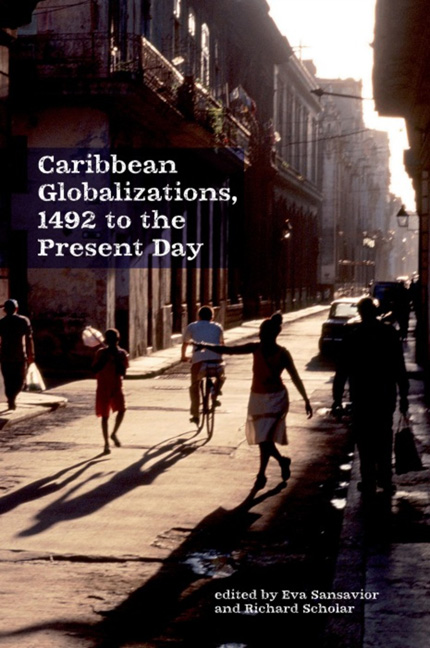Book contents
- Frontmatter
- Contents
- Contributors
- Prologue: Globalization, Globality, Globe-Stone
- Introduction
- I Globalizations in the Making
- 1 The Archipelago Goes Global: Late Glissant and the Early Modern Isolario
- 2 How Globalization Invented Indians in the Caribbean
- 3 Precocious Modernity: Environmental Change in the Early Caribbean
- 4 ‘Slaves’ in My Family: French Modes of Servitude in the New World
- 5 Paradoxical Encounters: The Essay as a Space of Globalization in Montaigne's ‘Des Cannibales’ and Maryse Condé's ‘O Brave New World’
- II The Complex Present
- Acknowledgements
- Index
1 - The Archipelago Goes Global: Late Glissant and the Early Modern Isolario
from I - Globalizations in the Making
- Frontmatter
- Contents
- Contributors
- Prologue: Globalization, Globality, Globe-Stone
- Introduction
- I Globalizations in the Making
- 1 The Archipelago Goes Global: Late Glissant and the Early Modern Isolario
- 2 How Globalization Invented Indians in the Caribbean
- 3 Precocious Modernity: Environmental Change in the Early Caribbean
- 4 ‘Slaves’ in My Family: French Modes of Servitude in the New World
- 5 Paradoxical Encounters: The Essay as a Space of Globalization in Montaigne's ‘Des Cannibales’ and Maryse Condé's ‘O Brave New World’
- II The Complex Present
- Acknowledgements
- Index
Summary
Depuis ces Archipels que j'habite, levés parmi tant d'autres, je vous propose de penser cette créolisation.
Édouard GlissantImagine, if you will, a chain of islands in a varying sea that separates the islands as it links them. Then picture this chain as the first of many. You might like to reflect exactly what you have just called to mind. Was it the archipelagos of the Caribbean? Or was it the globe that we inhabit?
Perhaps you pictured first the one and then the other. If so, your mind's eye made the aerial journey initiated by the sentence that figures as the epigraph to this essay. In that sentence, taken from his Traité du Tout-monde (1997), Édouard Glissant uses the image of the archipelago initially to characterize the region of the Caribbean, from where he writes, and then to gesture towards a globe made up of a myriad Caribbeans all engaged in the cultural process characteristic of the region, namely, creolization. Glissant reveals in this sentence the distinct and influential contribution of his late non-fictional work to contemporary Caribbean discussions of the global. He sums up that contribution in a proposition as arresting in French as it is hard to translate into English: ‘Le monde entier s'archipélise et se créolise’ (Glissant, 1997: 194). Glissant connects the two processes he says the whole world is undergoing by twinning them here as the main verbs of his sentence. It is a Caribbean archipelago that we see going global, here and elsewhere in his late work, and it is an archipelago of the mind as much as of the mind's physical environment. In both the Traité and the work of poetics that follows it in the same series, La Cohée du Lamentin (2005), Glissant uses the archipelago to characterize a way of thinking that reflects the creolizing of the world: ‘Le Monde tremble, se créolise […] La pensée archipélique tremble de ce tremblement’ (Glissant, 2005: 75–76). Archipelagic thinking embraces a vision of humanity as a diverse totality or what Glissant (2005: 76), quoting Montaigne (1992: III.2 (‘Du repentir’), 805), calls ‘la forme entière de l'humaine condition’ [‘the entire form of the human condition’]. This is a global vision that always starts, for Glissant (2005: 50), from a vantage point in his home island, Martinique, in the heart of the Caribbean archipelago.
- Type
- Chapter
- Information
- Caribbean Globalizations, 1492 to the Present Day , pp. 33 - 57Publisher: Liverpool University PressPrint publication year: 2015



